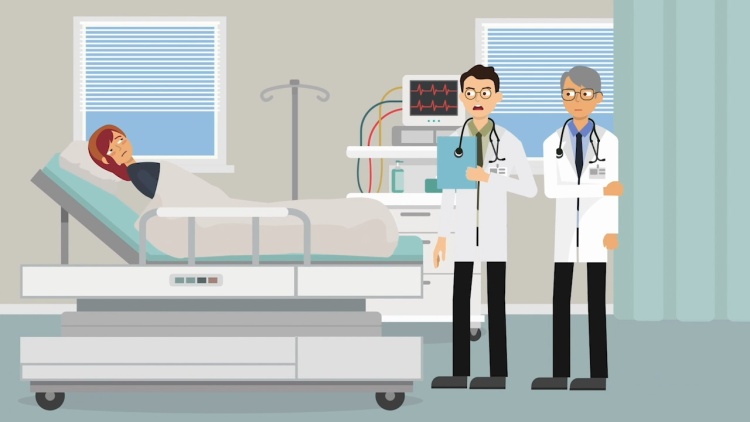McCourt v. Abernathy
South Carolina Supreme Court
457 S.E.2d 603 (1995)
- Written by Angela Patrick, JD
Facts
Wendy McCourt (plaintiff) poked her finger and then worked around horse manure and dirt. Two days later, McCourt hyperextended a shoulder. McCourt visited Dr. Glenn Abernathy (defendant), who treated her for a pulled muscle. Four days later, McCourt went to the emergency room with breathing issues and chest pain. Dr. J. D. Clyde (defendant) cleaned and dressed McCourt’s finger, treated her pulled muscle, and discharged her. The next day, McCourt was worse and went back to the emergency room. The emergency-room doctor ran blood tests and admitted McCourt to the hospital. A few hours later, Abernathy gave McCourt an antibiotic for her finger. In the morning, Abernathy and Clyde saw that McCourt was still getting worse and asked another doctor to examine her. The consulting doctor diagnosed McCourt with sepsis, a dangerous reaction to a bacterial infection, and sent her to intensive care for more aggressive treatment. McCourt was ultimately diagnosed with an infection from flesh-eating bacteria that had spread into her bloodstream and throughout her body. Over the next four days, McCourt suffered increasingly worse symptoms, such as her skin falling off, blood in her eyes, bleeding from her nose and mouth, and severe bloating. McCourt eventually died of multiple organ-system failures. McCourt’s estate sued Abernathy and Clyde for medical malpractice. The estate presented expert testimony that both Abernathy and Clyde had repeatedly failed to provide McCourt with a competent standard of care because a reasonably prudent doctor would have taken many care actions much sooner. Experts also testified that earlier treatment for McCourt’s infection likely would have saved her life. Abernathy and Clyde asked for specific jury instructions stating that a medical mistake, by itself, is not necessarily malpractice. The trial court did not use the requested instructions but did use other instructions that said something similar. The jury found that both doctors had committed medical malpractice and awarded regular and punitive damages to McCourt’s estate. The doctors appealed, arguing that the trial court had erred by refusing to use their specific, medical-mistake jury instructions and by allowing a punitive-damages award for a mere mistake.
Rule of Law
Issue
Holding and Reasoning (Shaw, J.)
What to do next…
Here's why 899,000 law students have relied on our case briefs:
- Written by law professors and practitioners, not other law students. 47,000 briefs, keyed to 994 casebooks. Top-notch customer support.
- The right amount of information, includes the facts, issues, rule of law, holding and reasoning, and any concurrences and dissents.
- Access in your classes, works on your mobile and tablet. Massive library of related video lessons and high quality multiple-choice questions.
- Easy to use, uniform format for every case brief. Written in plain English, not in legalese. Our briefs summarize and simplify; they don’t just repeat the court’s language.





